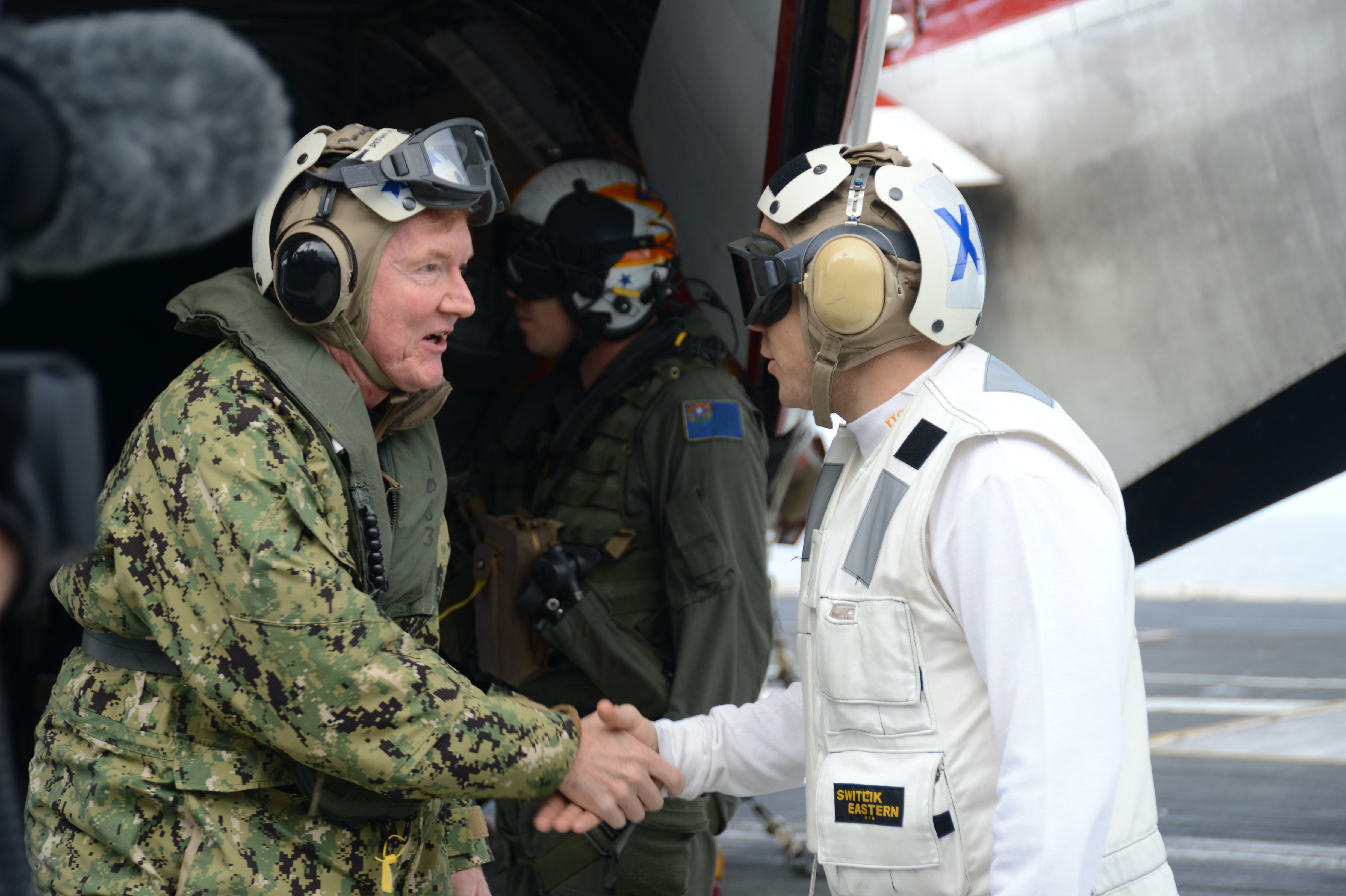
WASHINGTON, D.C. — As Russia continues to increase its submarine activity in the Mediterranean, Arctic and Atlantic, the U.S. Navy has made organizational changes to be more responsive but should invest in unmanned systems to support forces in the European theater, the four-star admiral who leads Naval Forces Europe said.
“We’re seeing a surge in undersea activity from the Russian Federation navy that we haven’t seen in a long time. Russia has continued to put resources into their undersea domain; it’s an asymmetric way of challenging the West and the NATO alliance, and actually they’ve done quite well,” Adm. James Foggo, the commander of U.S. Naval Forces Europe and Africa and NATO’s Allied Joint Force Command Naples, told reporters Wednesday morning at a Defense Writers Group breakfast.
“We in the United States submarine force still enjoy the competitive edge, I think we’re the best in the world and we need to stay that way.”
Foggo added that to maintain that edge and position of strength, “we have to continue to do research and development, and we have to continue to be the best that we can be, particularly in the undersea domain. That means being out there operating.”
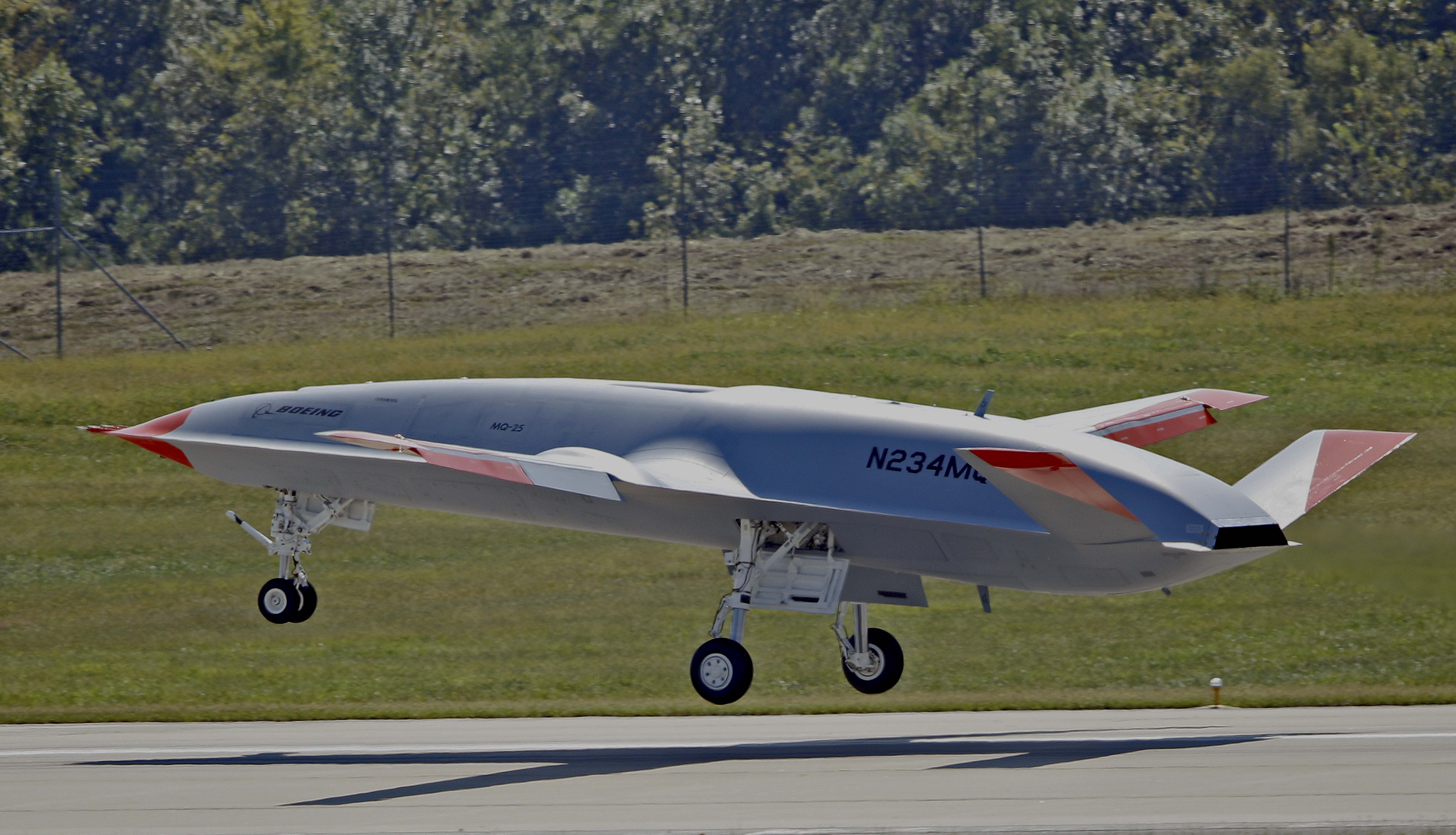
On the research, development and acquisition side, he told USNI News that unmanned aviation could provide his vast theater many benefits.
“Knowing what’s going on out there is extremely important. So for unmanned systems, [intelligence, surveillance and reconnaissance] is probably one of our limitations and we could use more of it. Indications and warnings are important. If you could put an unmanned system up, then there’s less of a risk, less of a threat,” he told USNI News during the breakfast.
He also said he strongly supports the MQ-25A Stingray unmanned carrier-based tanker, which is being developed by Boeing and is set to reach initial operational capability by 2024 or sooner.
“It extends the range of the strike capability or the reconnaissance capability of that aircraft, but it also puts the carrier in a position where it can be more stealthy and it can remain in the fight,” Foggo said.
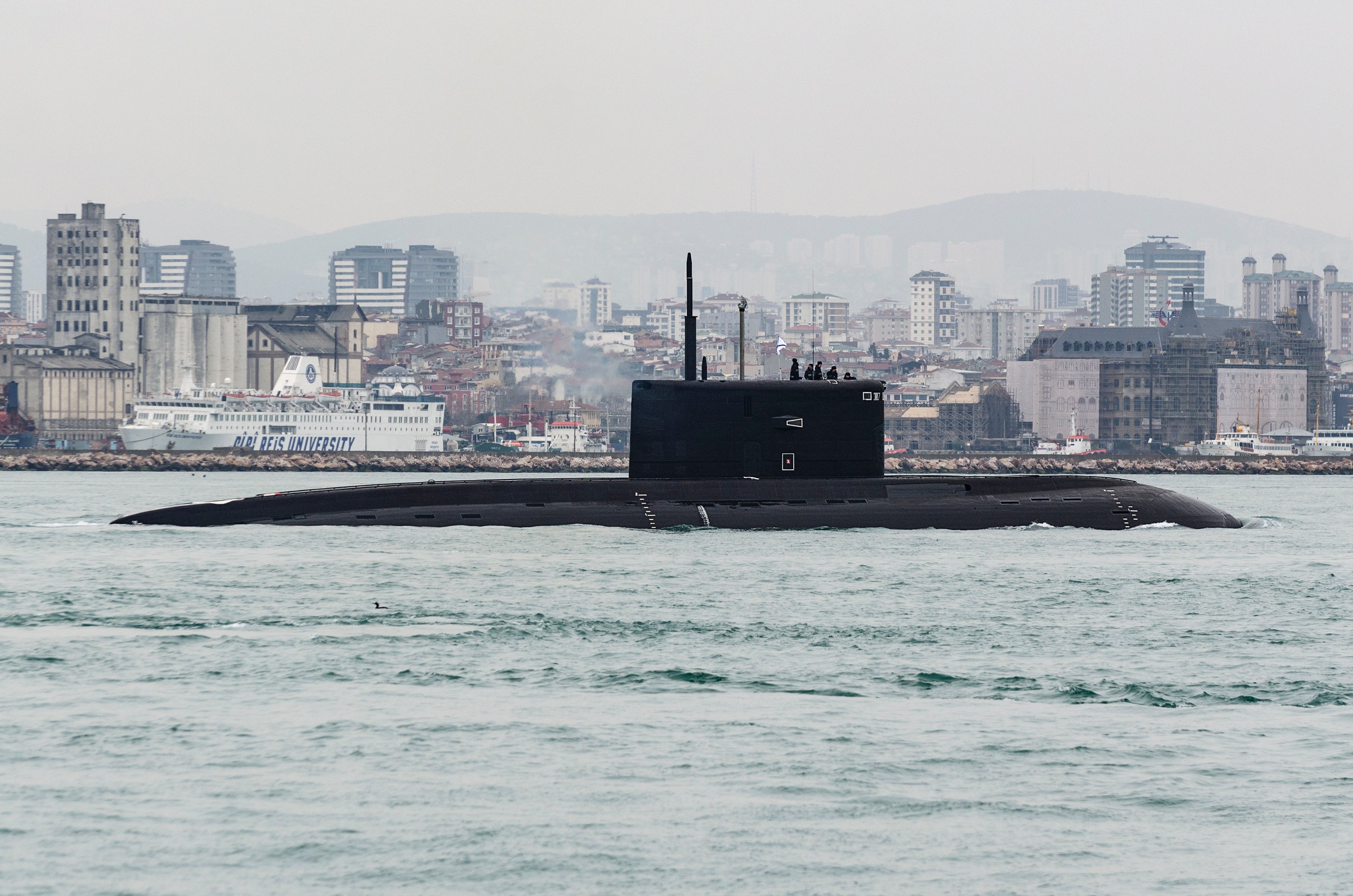
Additionally, the admiral spoke of netted coastal defense systems and other anti-access/area-denial (A2/AD) systems that the U.S. and its allies should be pursuing, in a similar manner that Russia has.
“As I tell the allies and partners, if you are limited in the amount of resources you have and you want to protect your shores, then think about what the Russians do with A2/AD and go after similar systems: smart mines, anti-ship cruise missiles, coastal radars that are connected,” the admiral said.
“For 10 years we’ve assisted the Africans with the Yaoundé Code of Conduct in joining coastal radars down the Gulf of Guinea so they have seamless integration across maritime territorial boundaries. And now, if there’s a bad actor out there, somebody who’s trafficking or somebody who has other malicious intent, they can pass off that information if he crosses a maritime domain boundary to the next nation, who can go out and intercept him. If they can do that, we can do that, and there ought to be an investment in that sort of thing in the future.”
Foggo made clear he’s happy with today’s technology at his disposal to counter Russian undersea activity in the North Atlantic and in the Mediterranean especially.
“The beauty of the platforms that I operate with – particularly the late-generation Virginia-class submarine, which is the best in the world, has the ability, flexibility, agility, dwell; it can stay places for a long time submerged, stealthy; and it has speed, it gets places fast, so I can move it around like a chess piece on a chessboard,” he said, adding that these SSNs and other ships allow him to leverage “a zone defense approach” to monitoring and pushing back against Russian undersea activity.
Foggo warned in a 2016 Proceedings article that “Despite the economic crisis in Russia, rubles continue to flow into the development of Russian submarine technology and the growth of that force. … Not only have Russia’s actions and capabilities increased in alarming and confrontational ways, its national-security policy is aimed at challenging the United States and its NATO allies and partners.”
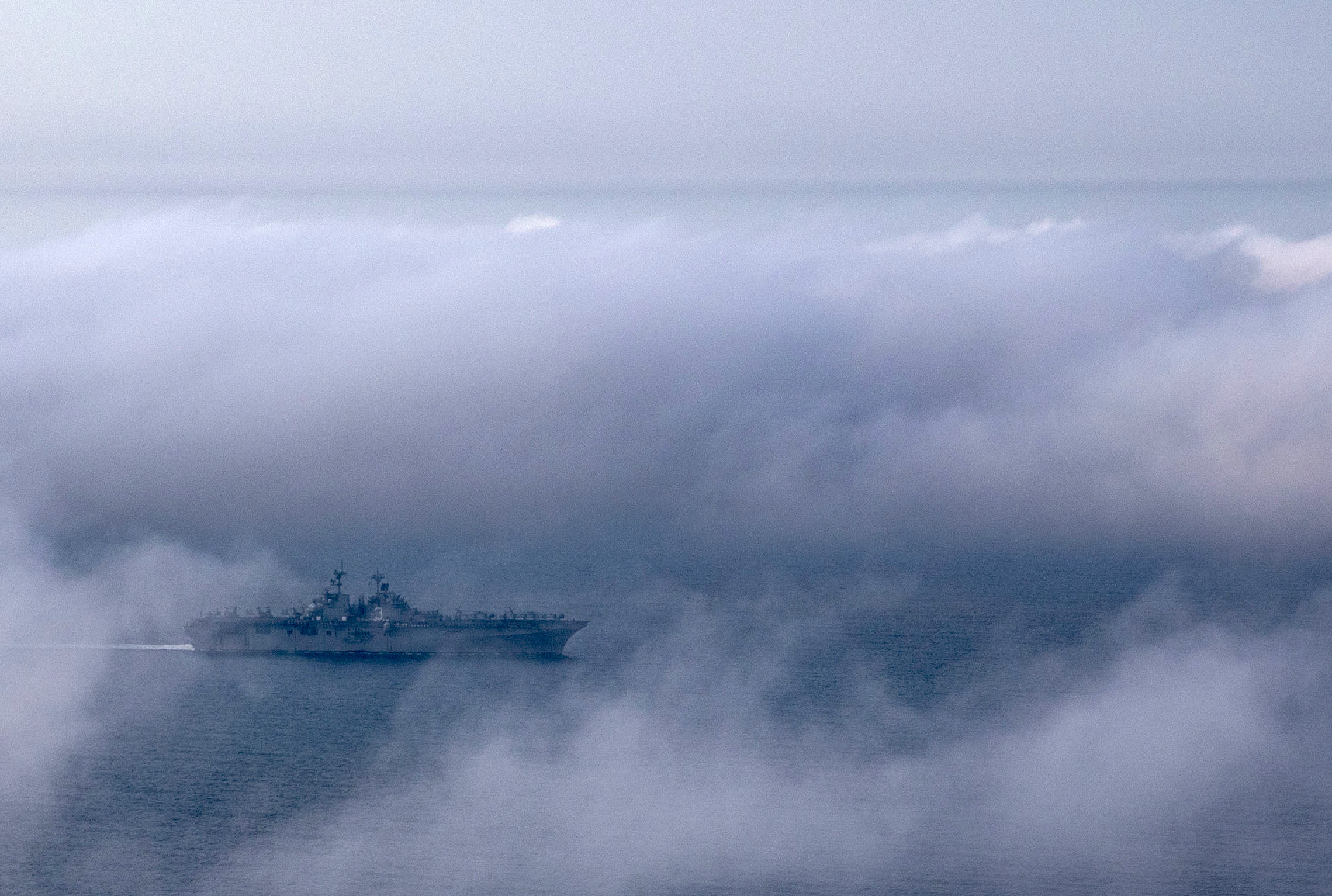
Since 2016, he told USNI News, the U.S. Navy brought back its U.S. 2nd Fleet organization in Norfolk, and NATO stood up a third joint force command in Norfolk to work with those already in the Netherlands and Italy.
“That has made the transatlantic bridge that much stronger. When you talk about preservation or control of the sea lines of communication, there’s a lot of force structure that’s available to respond in peacetime or in crisis from Norfolk, so that’s reassuring to the allies and partners,” he said of the organizational connection of the Virginia fleet concentration area and his theater on the other side of the ocean.
Foggo added that, since his 2016 essay, the U.S. and NATO have also bolstered their exercise schedule, including Trident Juncture 2018 that involved more than 50,000 personnel, 65 ships and 250 aircraft from 31 countries.
For Russia, who monitored this and other exercises up-close, “it sends a message. It changes your risk calculus. So if you’re President Putin, you say to yourself, that’s a pretty significant force and they moved it pretty quickly,” Foggo said, adding that Trident Juncture involved the movement of seven brigades in 30 days to fight against a simulated invasion of Norway. With NATO members highly focused on readiness and keeping crisis-response units on high alert, “NATO can move quickly, NATO has the preponderance of forces; so why would you take a risk, why would you risk some kind of a land-grab like Crimea? And that’s an important message.”
In his most recent episode of the podcast “On the Horizon,” Foggo described ongoing increases in Russian submarine activity in high latitudes as well as American and allied efforts to counter it.
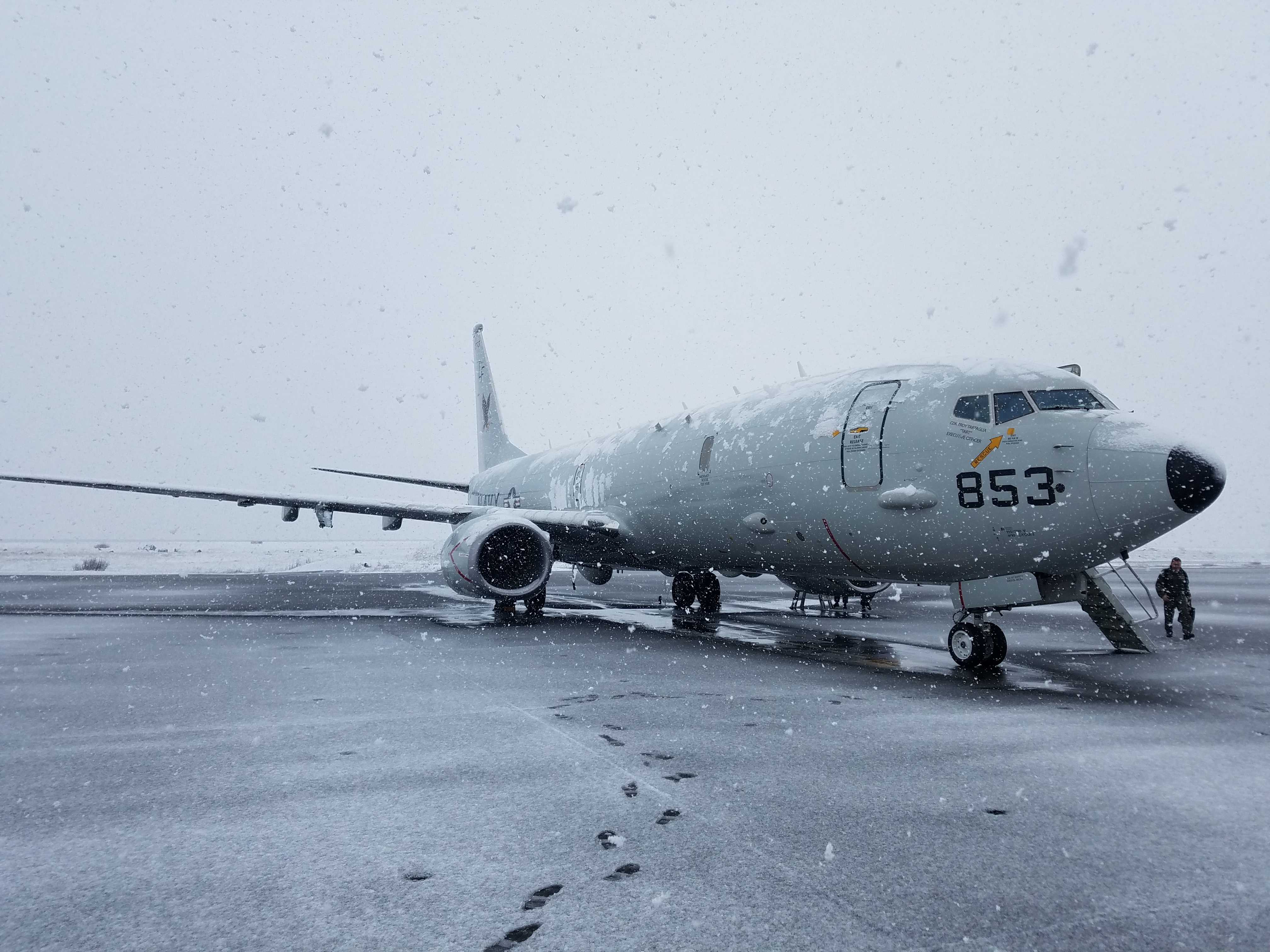
On the Russians, he said, “we’re seeing the Russians deploy more submarines in the North Atlantic, and these subs are deploying for longer periods of time and with more lethal weapon systems. Russia has returned to Soviet-era outposts and has built new military facilities in the Arctic Circle. Russia’s even built an icebreaker that can carry the Kalibr missile. So I’ve got to ask, who builds an icebreaker with a missile battery onboard? We’ve seen an increase with Russian submarines out on patrol in 2019 and more than I’ve seen throughout my time in Europe over the last 10 years.”
As for the U.S. and NATO response, he said during the podcast, “we’ve been conducting anti-submarine warfare in the Fourth Battle of the Atlantic. ASW is a team sport. It involves ships, submarines and aircraft from allies and partners. Aside from submarine and surface patrols, we’ve had a few other key activities, including a P-8 Poseidon aircraft conducted the first-ever aerial refueling of a P-8 in northern Europe, which further strengthens our maritime patrol capabilities by extending our time on station to track the bad guys,” he said.
“This was also significant for our NATO allies and partners as they acquired the Poseidon aircraft and its kit. For example, the United Kingdom and Norway have purchased the P-8, and the U.K. received its first P-8 this year.”





